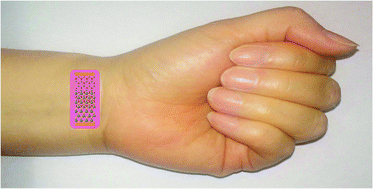Piezoelectricity in WSe2/MoS2 heterostructure atomic layers†
Abstract
A two-dimensional heterostructure of WSe2/MoS2 atomic layers has unique piezoelectric characteristics which depend on the number of atomic layers, stacking type and interlayer interaction size. The van der Waals heterostructure of p- and n-type TMDC atomic layers with different work functions forms a type-II staggered gap alignment. The large band offset of the conduction band minimum and the valence band maximum between p-type WSe2 and n-type MoS2 atomic layers leads to large electric polarization and piezoelectricity. The output voltages for a MoS2/WSe2 partial vertical heterostructure with a size of 3.0 nm × 1.5 nm were 0.137 V and 0.183 V under 4% and 8% tensile strains, respectively. The output voltage of an AB-stacking MoS2/WSe2 heterostructure was larger than that of an AA-stacking heterostructure under 4% tensile strain due to the contribution of intrinsic piezoelectricity and symmetric out-of-plane conditions. The AB-stacking has a lower formation energy and better structural stability compared to AA-stacking. The large output voltage of nanoscale partial or full vertical heterostructures of 2D WSe2/MoS2 atomic layers in addition to the increased output voltage through the series connection of multiple nanoscale piezoelectric devices will enable the realization of nano-electromechanical systems (NEMS) with TMDC heterostructure atomic layers.



 Please wait while we load your content...
Please wait while we load your content...
